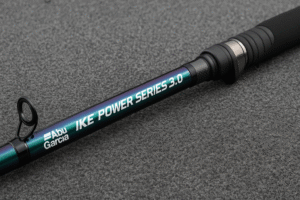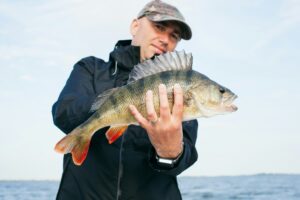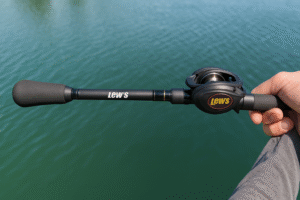Why Supporting Local Fishermen and Sustainable Seafood Matters
In today’s busy world, many people choose quick and easy meals without thinking about where their food comes from. But every piece of fish—whether it’s juicy shrimp, tender halibut, or sweet scallops—has a story. This story is about hardworking fishermen, lively seaside towns, and keeping our oceans healthy. Let’s explore why it’s important to support local fishermen and their communities by choosing sustainable seafood.
Helping Coastal Communities Thrive
Jobs and Money for Families
Local fishermen are the heart of seaside towns. Think of them like the roots of a tree—they hold everything together. When fishermen catch fish, they earn money to feed their families, pay for boats, and buy tools like nets and traps. But it’s not just about them. Their work helps other people, too. For example, boat repair shops, fish markets, and even restaurants depend on fishermen to stay open. If fishermen disappear, these businesses might close, and towns could lose jobs.
Imagine a small coastal village where most families have fished for generations. Kids grow up learning to mend nets or steer boats. When we buy fish from these towns, we help keep their way of life alive. It’s like giving them a high-five and saying, “We want you to keep doing what you love!”
Building Relationships
Have you ever met the person who grew your vegetables or baked your bread? Buying fish directly from local fishermen feels the same way. At farmers’ markets or dockside stands, you can shake hands with the person who caught your dinner. They might tell you stories about the ocean or teach you how to cook a new type of fish.
This connection makes food feel special. It’s not just a meal—it’s a shared effort. When you support local fishermen, you’re also helping neighbors support each other. For instance, if a storm damages a fisherman’s boat, the community might chip in to fix it. These bonds keep seaside towns strong, like a big family working together.
Protecting the Ocean’s Future
Fishing the Right Way
Sustainable fishing means catching fish in ways that don’t hurt the ocean. Let’s break this down:
Selective Gear: Some nets have holes that let baby fish swim free. This way, only grown fish are caught, leaving the young ones to grow and have babies later.
Habitat Protection: Coral reefs and seagrass beds are like underwater cities for fish. Responsible fishermen avoid dragging heavy nets over these areas to keep them safe.
Catch Limits: Rules like “only catch 100 fish per trip” stop overfishing. This ensures there are enough fish left in the ocean to reproduce.
When fishermen follow these practices, fish populations stay healthy. For example, in Maine, lobster fishermen work together to protect baby lobsters. They even throw back egg-carrying females. Thanks to these efforts, lobsters are still plentiful there today!
Less Travel, Fresher Food
Have you ever tracked how far your food travels? Fish sold in big stores might come from another country. It’s packed on trucks, planes, or ships for days, burning fuel and creating pollution. Local seafood, though, doesn’t travel far. Imagine a fisherman catching fish in the morning and selling it at your market by afternoon—that’s fresh!
Buying local also keeps money in your community. For every dollar spent at a local fish stand, more of it stays nearby, helping schools, parks, and libraries. It’s like a circle of support: You help fishermen, and they help your town grow.
Discovering Delicious Seafood
Tastes of the Coast
Every coastal area has its own special dishes, just like how your town might have a famous festival or food. In Alaska, people smoke salmon over wood fires. In Louisiana, they spice up shrimp with cayenne pepper for gumbo. By choosing local fish, you get to taste these unique flavors.
Here’s a fun fact: Oysters from Washington taste different than oysters from Florida! That’s because the water, weather, and even the rocks they grow on change their flavor. Trying local seafood is like taking a tasty trip around the country without leaving your kitchen.
Trying New Things
Big stores often sell only popular fish like salmon or tuna. But local fishermen might offer types you’ve never heard of, like mackerel, clams, or monkfish. These can be fun to cook! For example:
Mackerel: Grill it with lemon for a zesty dinner.
Clams: Steam them with garlic and butter for a cozy meal.
Monkfish: Roast it like chicken—it’s called “the poor man’s lobster”!
Experimenting with new recipes helps us appreciate the ocean’s variety. Plus, it supports fishermen who catch less common fish. If everyone only ate tuna, fishermen might ignore other species, which could upset the ocean’s balance.
What You Can Do
Ask Questions
Next time you’re at the store or market, ask:
“Where was this fish caught?”
“How was it caught?”
“Is it local?”
Look for labels like “sustainably sourced” or ask if the fisherman uses eco-friendly gear. Many community-supported fisheries (CSFs) even send emails about their catches, like a seafood newsletter! The more we ask, the more stores will care about selling responsible seafood.
Support Good Rules
Laws can protect both fishermen and the ocean. For example:
No-Fishing Zones: Areas where fish can grow safely.
Size Limits: Rules like “you can’t keep crabs smaller than 5 inches.”
You don’t have to be a scientist to help. Write a letter to your leaders, sign a petition, or join a beach cleanup. Even sharing a social media post about sustainable fishing makes a difference!
Share What You Know
Tell your friends why local seafood matters. Here’s how:
Post a photo of a fish taco you made with local cod.
Share a video of a fisherman explaining his daily routine.
Host a seafood potluck where everyone brings a dish made with local fish.
The more people learn, the more they’ll want to help. Imagine if your whole school or neighborhood started buying local seafood—that’s a wave of change!
In Summary
Choosing local, sustainable seafood isn’t just about eating well—it’s about caring for the ocean, supporting hardworking families, and keeping coastal traditions alive. Every time we pick local fish, we’re making a choice that helps fishermen, communities, and the planet.
Here’s how it all connects:
- Fishermen earn fair pay to feed their families.
- Towns keep their jobs, schools, and culture.
- The Ocean stays healthy with plenty of fish.
- You get fresh, tasty meals and new recipes to try.
Together, we can ensure the ocean stays full of life and that seaside towns keep shining. Let’s celebrate our seafood heroes and enjoy every bite, knowing it’s part of a bigger story!





